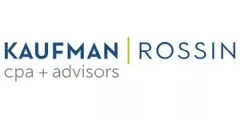If you feel like your board of directors is performing really well right now, make sure to celebrate the moment. It's not likely to last forever. Everything is changing all the time, and the best organizations are flexible enough to welcome and benefit from that change, while continually looking at areas for improvement.
Your organization needs to understand and adopt innovations in your field. Does your leadership team have the right expertise to do so? New risks may arise related to your data, your regulatory compliance, or your competitive advantage. Do you have directors who specialize in those risks? Board members or executives may experience life changes that shift the dynamics of the company. Is your succession plan viable?
Regular reflection on your board's work together can help prepare you to embrace these changes and others, being proactive rather than reacting in fear and haste. Start with these four areas.
1. Start by assessing your board's effectiveness – and do it often
A recent survey reported in the Harvard Law School Forum for Corporate Governance placed conducting board evaluations at the bottom of a list of processes where boards have become more effective, with many boards saying they have become less effective in this area in recent years. How often do you seriously assess your performance as a board?
According to the principles set by The Business Roundtable, directors are responsible for approving strategies that build long-term sustainable value, selecting the CEO and overseeing them and the executives operating the business, and setting the tone at the top for ethical conduct. Effective boards don't just check the boxes on these responsibilities – they use directors' time and talents efficiently to give management the appropriate guidance.
Best practices suggest an annual review of effectiveness. Don't just review whether directors are meeting their commitments of attendance and participation; seek to fill gaps in knowledge that will be essential in the next several years.
The ideal board assessment has three parts: self-assessment using a customized questionnaire, peer assessment with a similar tool, and individual conversations with each director reflecting the data you've gathered. It's best to engage outside advisers in this process, to avoid personal bias and gain objective insights.
2. Add training to every board meeting.
As a result of the assessment, you'll have a starting list for training. Consider incorporating a 15-minute learning session into each board meeting. Board members should take the opportunity to ask many questions during these learning sessions, and management should not be present.
Some of these sessions may be taught by board members with specific expertise, sharing the high-level knowledge every director should have. For example, everyone needs to understand the cybersecurity risks your organization faces, not just the security expert director you added to the board. Other topics will best be addressed by outside advisors. Training topics will vary depending on your organization's industry, structure, and even geography. They might include:
- New regulatory risks
- Stakeholder activism
- Trends in workforce strategies
- Impacts of climate change on supply chain
- New trends in board operations
- Risks and opportunities related to innovation and technology
3. Diversify your directors.
When all directors share the same background, your board may feel comfortable and aligned. That comfort will likely limit your effectiveness. The perspectives that come from difference aren't only based on race or age or gender; they can include differences in functional expertise or prior experience. For example, imagine considering a decision about a merger, and benefiting from the perspective of a fellow director who has been through a failed merger and knows the pitfalls.
Kathleen Crandall, founder of Know My Impact, works extensively with directors to help them achieve greater impact. She notes, "Private companies will be best served with board members who represent a broad base of experience both in their functional roles, but also in the industry expertise and size of organizations. The most successful boards are not comprised of solely CEO or other C-level leaders from large corporations but include a blend of experts who bring relevant experience and results that mirror the company vision and one- to five-year goals."
But how can you decide who to recruit? Begin by identifying risks and opportunities facing the organization in the next five years. Cybersecurity and artificial intelligence will surely be on your list. What about generational shifts in buyer behavior, or global supply chain challenges? Look around the boardroom: do you see directors who can advise management on each of these risks and opportunities?
"Most companies are facing challenges because the board is too one-dimensional or solely focused on one specific industry," Crandall advises. "Some of the most impactful boards feature leaders who think differently and have more innovative solutions based on unique perspectives. Technology and specifically AI and Generative AI will make a significant impact in most businesses," she predicts, "and those who do not have a solid perspective from technology innovators will fail within 2 to 3 years without shifting perspectives."
4. Plan for CEO succession
The CEO's profile and reputation are key to public perceptions of the company, and often drive investor decisions. If the role is suddenly vacant, or the successor hastily chosen, company performance can suffer.
More than 1,700 chief executives left their roles in 2023, according to research by Challenger Gray & Christmas. And even if your CEO is the company founder and solidly entrenched, this should be addressed early, regularly, and not superficially. What will happen if the CEO suddenly takes ill, dies, or needs to leave the position due to a family emergency?
The nominating committee must lead the conversation and create an action plan. Include the current CEO as a key player. The committee should develop a solid, forward-thinking profile for the future CEO. What qualities will the next CEO need to successfully achieve the five-year vision? They may need different strengths than the incumbent.
Considerations include:
- Does the CEO have a specific successor in mind? Is this the best person for the role, or are there red flags? If it's a family member, is there consensus on the choice? Where are their gaps?
- Is there a pipeline of internal candidates? Who's on that list, and what development plans are in place to get them ready? The committee should have visibility into the development plans and their progress, and directors should get to know these candidates in the context of their current roles.
- What qualities are missing in the internal candidate set which might be found in external candidates? Review the long-term goals and identify new skill sets or experience that could lead to increased success. Consider benchmarking external options by talking with a search firm.
Assess, learn, diversify and plan for your future. Finding areas that need improvement is good news – you'll know how to make your board better.
Read the full article on Private Company Director.
The content of this article is intended to provide a general guide to the subject matter. Specialist advice should be sought about your specific circumstances.


